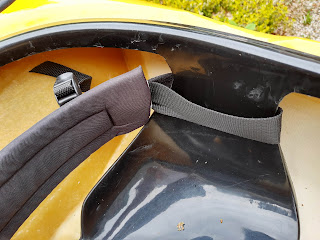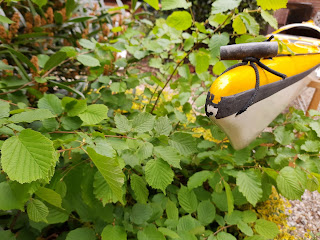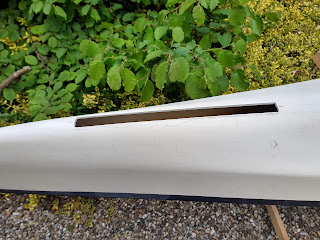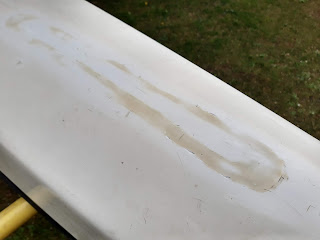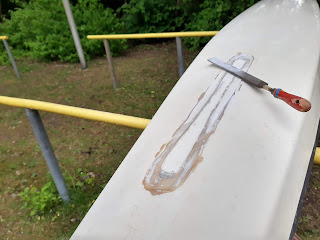As mentioned in an earlier post:
about-greenland-paddles I have a second greenland paddle that I don't use as it is clearly not as good as my first one. I think this is caused by the more blunt edges of this red cedar paddle without hard wood insets. Refining the edges could be an option but as the wood is very soft the edges would be prone to damaging.
 |
| it's the middle one |
Some time ago the idea grew to extend the paddle with hard wood insets and in the same time making the blades wider. It should become a sort of a power blade Greenland paddle. There is a rule of thumb for the maximum blade width: you must be able to grip the blade with your hand in a C-shape. In my case, as I have long hands, I could reach to about 12 cm. With the current blade of 9 cm there is a lot to win.
In stead of glueing pieces of wood to the sides I thought it would be stronger to make a shallow groove around the edges to glue strips of wood in. So I tried but it appeared hard to make such a groove. I ended up by sawing completely through the blades because that is a lot easier. A very deep groove indeed...
 |
| sawing through the blade |
Then I glued strips of wood in between both sides of the blade with epoxy. Of course around the edges but also one strip in the middle to prevent deformation while clamping both sides on each other. For this experiment I used some yellow pine, not really a hardwood like ash or oak but a lot harder than red cedar.
 |
| Wood strips glued into the blade |
Unfortunately the strips were not a very good idea as there was a lot of filleting needed to make a well fairing profile. Glueing thicker pieces of wood to the sides would have been a better idea.
 |
| some epoxy filleting... |
 |
| and a lot of sanding... |
After a few times of adding epoxy fillets and a lot of sanding the result was a paddle with wide and thin edged blades. The width at the tip has grown from 9 to 11 cm. As the extensions taper the extra width reduces to 0 at the loom. By the way, my Schlegel reserve paddle is even wider with 11.5 cm. The result is promising but however not very attractive and it would need some paint to cover up the epoxy fillets. But before the final finishing I would like to try it first. You'll never know what changes have to be made yet...
 |
| The result left compared to my first paddle right |
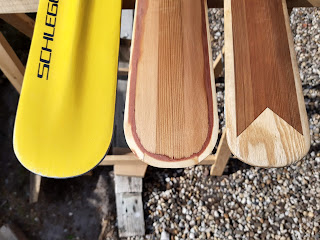 |
| also compared to my Schlegel spare paddle |
 |
| the Schlegel has no tapered blade |
















